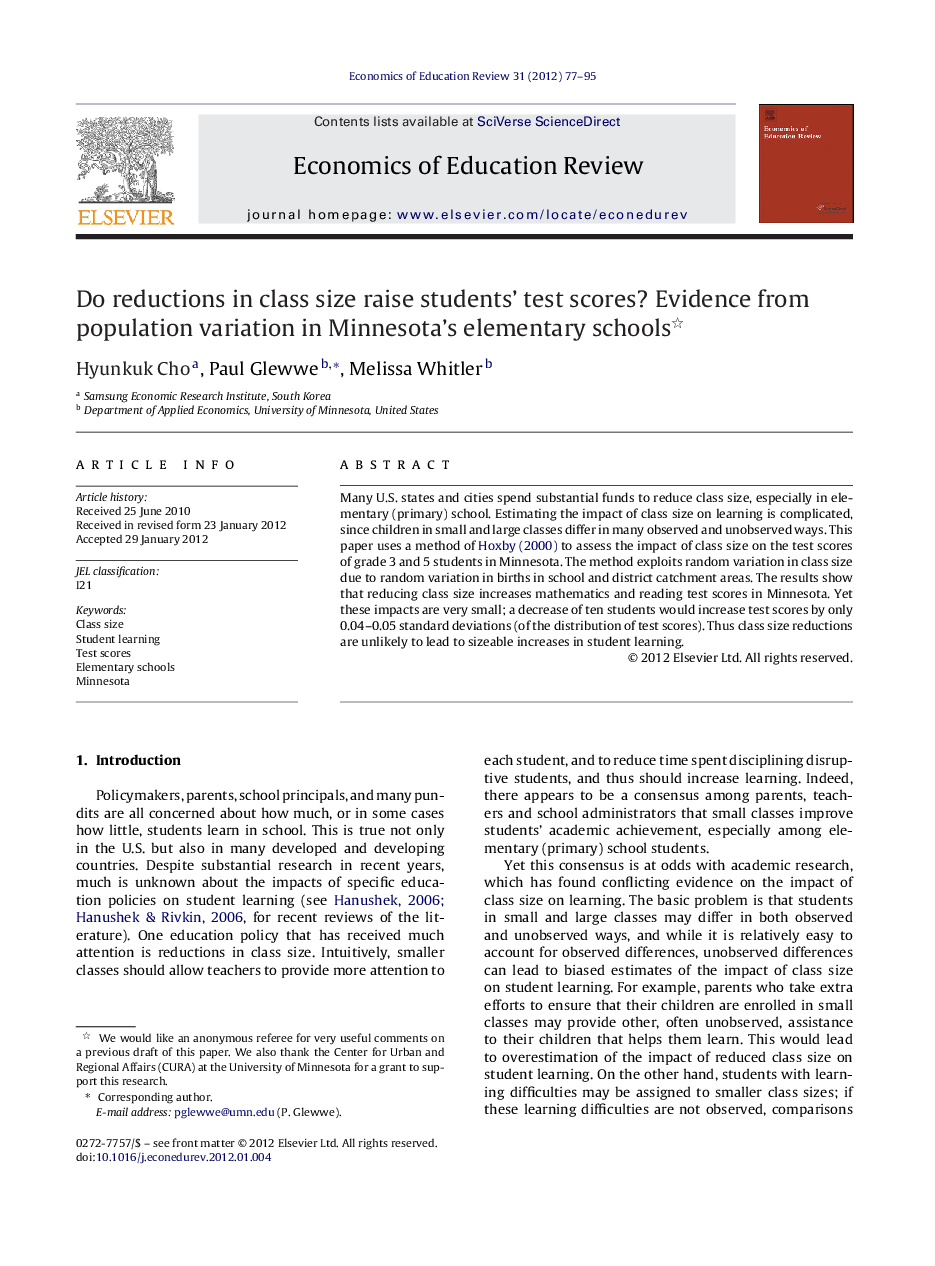| کد مقاله | کد نشریه | سال انتشار | مقاله انگلیسی | نسخه تمام متن |
|---|---|---|---|---|
| 354726 | 1434835 | 2012 | 19 صفحه PDF | دانلود رایگان |

Many U.S. states and cities spend substantial funds to reduce class size, especially in elementary (primary) school. Estimating the impact of class size on learning is complicated, since children in small and large classes differ in many observed and unobserved ways. This paper uses a method of Hoxby (2000) to assess the impact of class size on the test scores of grade 3 and 5 students in Minnesota. The method exploits random variation in class size due to random variation in births in school and district catchment areas. The results show that reducing class size increases mathematics and reading test scores in Minnesota. Yet these impacts are very small; a decrease of ten students would increase test scores by only 0.04–0.05 standard deviations (of the distribution of test scores). Thus class size reductions are unlikely to lead to sizeable increases in student learning.
► Consistent estimation of the impact of class size on student learning is difficult.
► This paper uses a method introduced by Hoxby (2000).
► It estimates impacts of class size on test scores of grade 3 and 5 pupils in Minnesota.
► Reductions in class size increase mathematics and reading test scores in Minnesota.
► But the effect is small; 10 fewer pupils raise scores by only .04–.05 standard deviations.
Journal: Economics of Education Review - Volume 31, Issue 3, June 2012, Pages 77–95